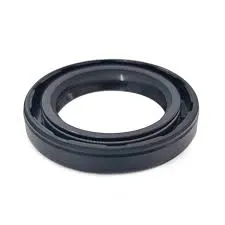10 月 . 05, 2024 14:59 Back to list
head gasket and valve cover gasket
Understanding Head Gasket and Valve Cover Gasket Importance and Maintenance
When it comes to automotive engines, gaskets play a critical role in ensuring efficiency, performance, and longevity. Among various gaskets, the head gasket and the valve cover gasket are two of the most vital components. This article will delve into the significance of these gaskets, their functions, common issues, and maintenance tips.
Head Gasket The Heart of Engine Sealing
The head gasket is a crucial component that sits between the engine block and the cylinder head. Its primary function is to seal the combustion chambers, allowing for efficient combustion and preventing oil and coolant from leaking into the engine cylinders. The head gasket handles extreme temperatures and pressures, which makes it one of the most stressed components in an engine.
A failing head gasket can lead to a range of serious issues. Common symptoms of a blown head gasket include overheating, white smoke from the exhaust, loss of coolant with no visible leaks, and milkshake-like engine oil. When a head gasket fails, it can result in significant engine damage if not addressed promptly.
Valve Cover Gasket The Guardian of the Engine's Top
In contrast, the valve cover gasket seals the space between the valve cover and the cylinder head. It prevents oil leaks from the top of the engine and protects the internal components from dirt and debris. The valve cover gasket ensures that the oil circulation system functions properly and maintains an optimal operating environment for the engine's moving parts.
Over time, it’s common for the valve cover gasket to deteriorate due to heat, age, and exposure to engine oil. A leaking valve cover gasket can cause oil to seep onto other engine components, leading to lowered oil levels and potential damage. Symptoms of a failing valve cover gasket include oil leaks, burning oil smell, and engine noise due to insufficient lubrication.
Common Issues and Signs of Failure
Both the head gasket and valve cover gasket can fail due to various reasons, including extreme temperatures, improper installation, and prolonged engine operation without maintenance. Here are some common signs that these gaskets may need attention
1. Head Gasket Failure - Overheating engine - White smoke from the exhaust - Bubbles in the radiator - Low coolant levels without any visible leaks - Engine misfires
head gasket and valve cover gasket

Maintenance Tips
Regular maintenance is key to ensuring the longevity of the head gasket and valve cover gasket. Here are some tips to help maintain these essential components
1. Regular Oil Changes Regularly changing the engine oil helps keep the engine clean and reduces the risk of sludge buildup that can lead to gasket failure.
2. Monitoring Engine Temperature Pay attention to the engine temperature gauge. Consistent overheating may indicate a failing head gasket or other cooling system issues.
3. Visual Inspections Regularly inspect the engine for any signs of oil leaks, fluid levels, or other abnormalities. Early detection of leaks can save significant repair costs.
4. Professional Inspections It’s advisable to have a qualified mechanic inspect the engine periodically, especially if you notice any symptoms of gasket failure. Catching issues early can prevent costly repairs down the line.
5. Quality Repairs If you find that either gasket needs replacing, ensure that the repair work is conducted by professionals using high-quality materials to avoid recurrence of the issue.
Conclusion
In conclusion, both the head gasket and valve cover gasket are integral components of an engine, playing a significant role in sealing and protecting the engine's internal environment. Understanding their functions and signs of potential failure can help car owners maintain their vehicles better and avoid costly repairs. Taking proactive measures in maintenance can lead to enhanced engine performance and longevity. Always prioritize regular inspections and quality repairs to keep your engine running smoothly for years to come.